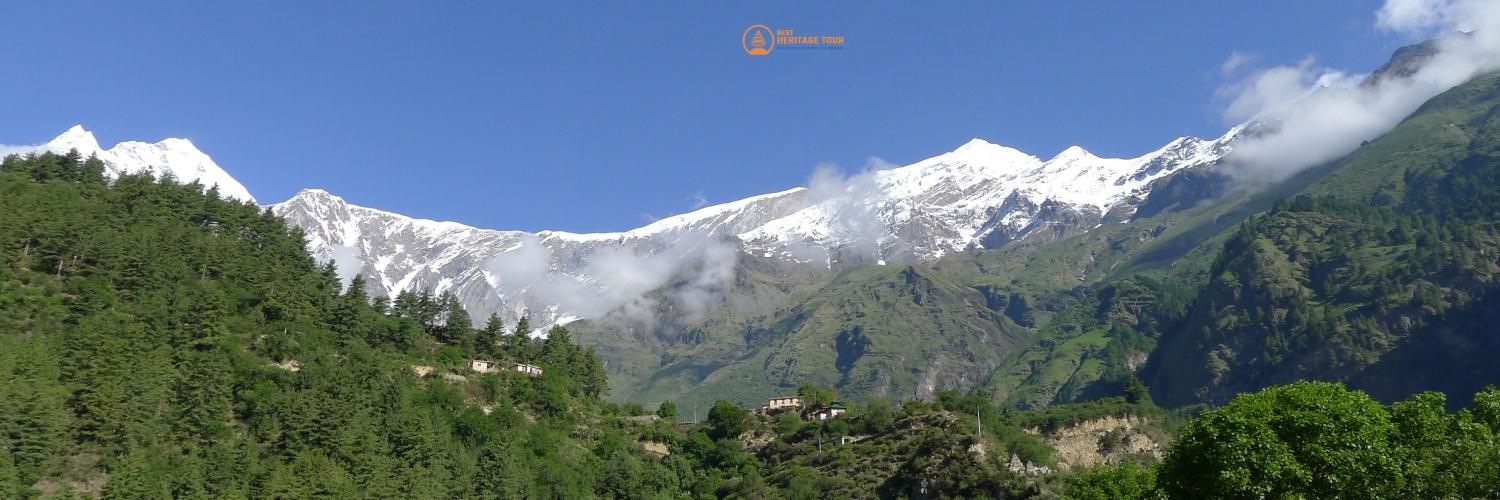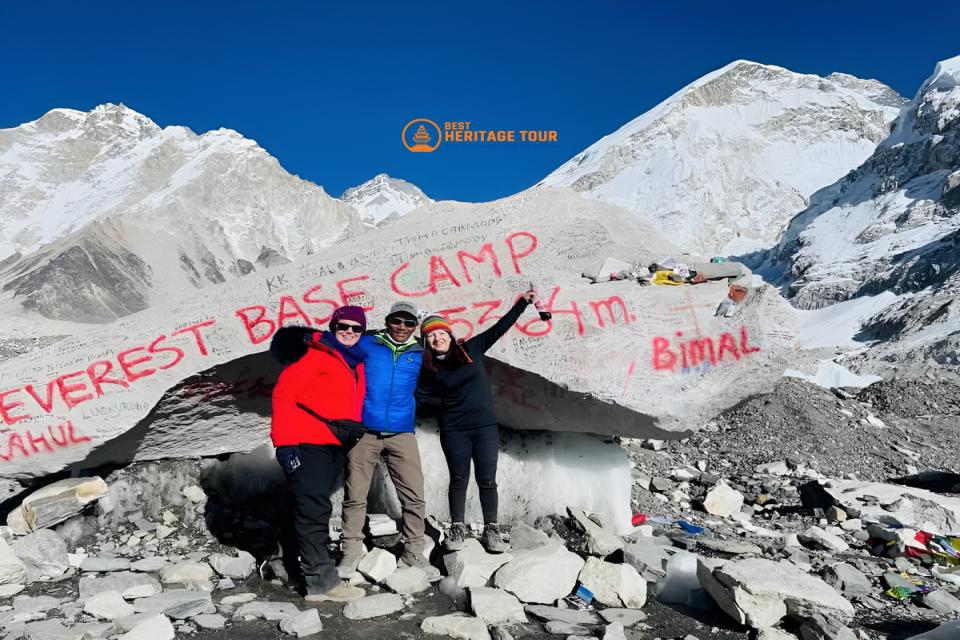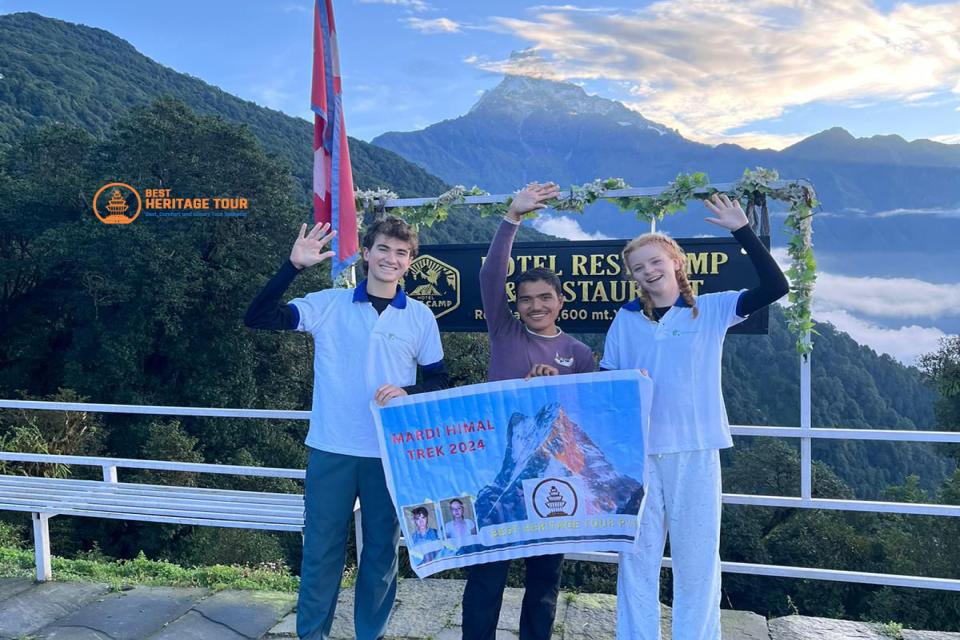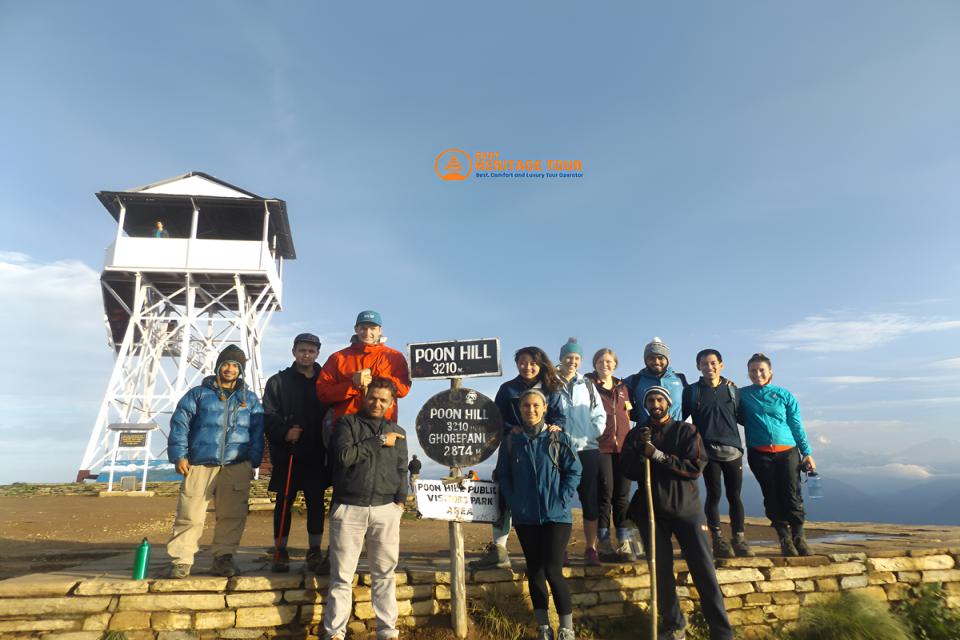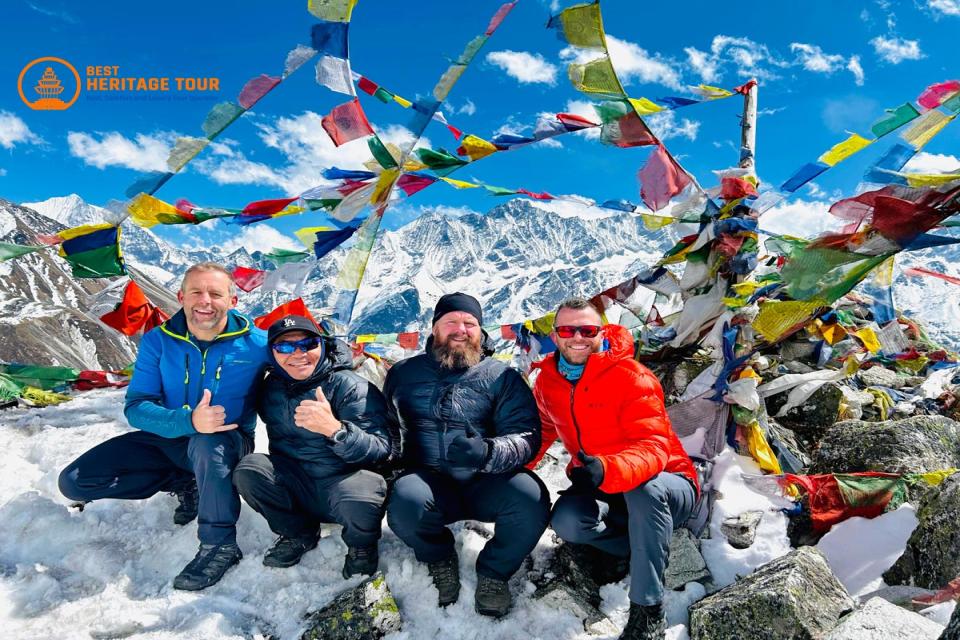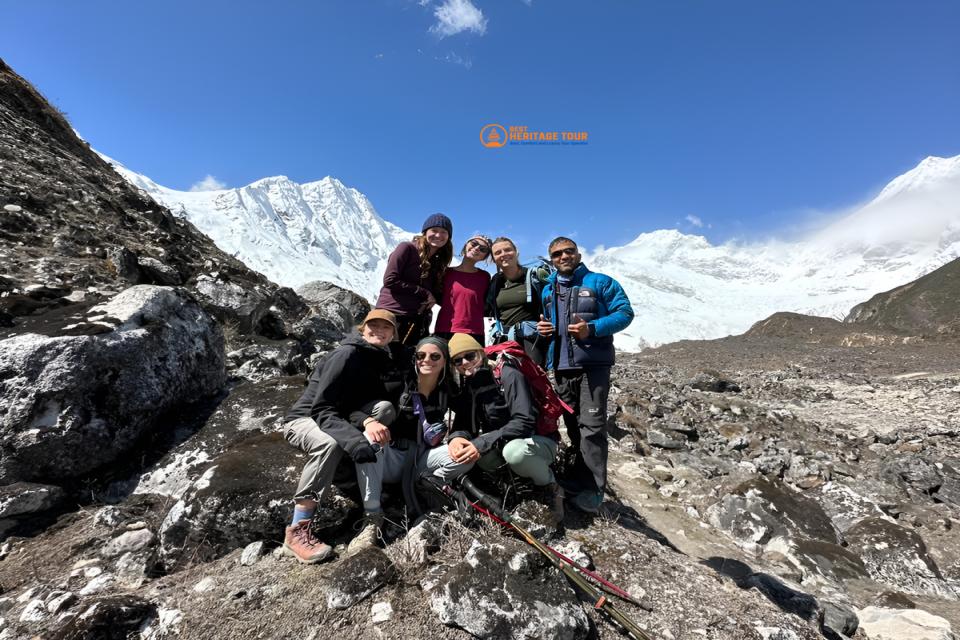Trekking in Nepal is a dream for adventurers from across the globe. From majestic Himalayan peaks to serene trails through ancient villages, every path here tells a story. While most trekkers flock to Nepal in spring and autumn, winter trekking - spanning December to early February, offers a completely different kind of magic. The crisp air, crystal-clear mountain views, and peaceful trails create an atmosphere that few travelers ever get to experience.
However, trekking in winter also brings unique challenges. The cold temperatures, shorter daylight hours, and snow-covered routes demand extra preparation and awareness. Whether you are a first-time trekker or a seasoned traveler, understanding how to prepare for winter trekking in Nepal can make your journey both safe and unforgettable.
Here are essential, experience-backed tips from Best Heritage Tour, your trusted local travel companion, to help you plan and enjoy a flawless winter trekking adventure in Nepal.
Why Trekking in Nepal During Winter is Worth It
1. Clear Skies and Unobstructed Mountain Views
Winter in Nepal is known for its crisp air and clear skies. The monsoon is long gone, and the atmosphere is dry - offering some of the sharpest, most spectacular views of the Himalayas. Whether you’re gazing toward the snow-draped peaks or capturing the early morning glow, winter provides photographer’s paradise conditions unlike any other season.
2. Peaceful and Less Crowded Trails
Winter trekking is ideal for those seeking peace, solitude, and a genuine connection with nature. Since this season is considered off-peak, the trails are quieter, lodges are less crowded, and you’ll have the serene beauty of the Himalayas almost to yourself. For travelers who prefer slow travel and authentic experiences over busy trails, winter is the perfect time to explore.
3. Authentic Local Encounters
With fewer tourists around, winter offers more opportunities for meaningful cultural exchanges with local villagers, guides, and porters. You’ll experience genuine Nepali hospitality, enjoy freshly cooked warm meals, and feel a deeper connection to the region’s rhythm of life.
4. Budget-Friendly Season
As winter is the off-season for trekking, many lodges and travel services offer discounts on accommodation and permits. Booking with a professional operator like Best Heritage Tour ensures you get affordable yet reliable packages, expert guidance, and well-planned logistics tailored to winter conditions.
Understanding Winter Weather in Nepal
Winter in Nepal (December to early February) varies significantly by altitude and region. In Kathmandu and lower hills, daytime temperatures can range between 10°C to 18°C, while mornings and nights can drop near freezing.
At higher altitudes, especially above 3,000 meters, temperatures can plummet to -10°C or even lower at night. Snowfall may occur in mountain passes and high trails, occasionally making routes slippery or closed temporarily.
Pro Tip:
Always check the latest weather forecasts and trail conditions before departure, and choose experienced guides who are familiar with the terrain and seasonal changes.
Essential Preparation for Winter Treks in Nepal
1. Physical Fitness and Acclimatization
Winter trekking demands both strength and endurance. The cold air and heavier clothing can make walking more tiring. Start preparing at least a month before your trek by engaging in cardio workouts, hiking practice, and leg-strengthening exercises.
Also, remember that even in winter, altitude sickness remains a risk. Allow enough time for proper acclimatization, take rest days when needed, and stay hydrated throughout your trek.
2. Trekking Permits and Insurance
All trekkers in Nepal require proper permits such as the TIMS (Trekkers’ Information Management System) card and applicable national park or conservation area entry permits.
In winter, it’s crucial to have comprehensive travel insurance that covers emergency evacuation, as unpredictable weather can sometimes affect accessibility. A trusted local agency like Best Heritage Tour can handle all these formalities seamlessly on your behalf.
Packing Smart for the Cold
Packing for winter trekking in Nepal is all about layering and protection. Since temperatures can vary throughout the day, layering allows flexibility to stay warm without overheating.
1. Clothing Layers
-
Base Layer: Moisture-wicking thermal tops and leggings to keep your body dry.
-
Mid Layer: Fleece or down jacket for insulation.
-
Outer Layer: Waterproof and windproof jacket to block snow and wind.
-
Trekking Pants: Quick-dry and insulated trekking trousers.
-
Headwear: Woolen hat, neck gaiter, and thermal gloves.
-
Footwear: Waterproof trekking boots with warm socks.
2. Essential Accessories
-
UV-protected sunglasses (snow glare can be intense)
-
Sunscreen and lip balm
-
Reusable water bottle or thermos (hot water helps maintain body warmth)
-
Headlamp with extra batteries (daylight is shorter in winter)
3. Sleeping Gear
While most teahouses provide blankets, they may not be sufficient in extreme cold. Carry a four-season sleeping bag (rated at -15°C or lower) for comfort and warmth.
Staying Safe on the Trail
Safety should always come first when trekking in the Himalayas, especially during winter.
1. Trek with Experienced Guides
Local guides understand the terrain, weather shifts, and alternate routes. Partnering with a professional operator like Best Heritage Tour ensures you have trained, licensed guides who prioritize your safety and comfort.
2. Monitor Weather Updates
Snowfall or high winds can change plans quickly. Always stay informed about weather updates and be flexible with your itinerary.
3. Start Early, End Early
Winter days are shorter - sunsets can occur as early as 5 PM. Begin your trek early in the morning and aim to reach your lodge before dark to avoid freezing temperatures and limited visibility.
4. Keep Hydrated and Eat Well
Cold weather often suppresses thirst, but dehydration increases fatigue. Drink plenty of water, eat warm and energy-rich meals, and avoid excessive caffeine or alcohol.
Health and Altitude Considerations
Even in winter, altitude-related issues like Acute Mountain Sickness (AMS) can occur. Recognize symptoms early - headache, dizziness, nausea and descend if they worsen. Always trek at a gradual pace and communicate openly with your guide about how you’re feeling.
Pro Tip:
Carry altitude sickness medication only upon your doctor’s advice, and never skip acclimatization rest days.
Responsible and Sustainable Trekking
Winter trekking offers a chance to appreciate Nepal’s natural beauty at its purest. As visitors, it’s essential to trek responsibly.
-
Avoid littering - carry reusable bottles and bags.
-
Respect local traditions and customs.
-
Support local lodges and communities by buying local products or hiring local porters.
-
Choose eco-conscious tour operators like Best Heritage Tour, who promote sustainable tourism practices in Nepal’s fragile mountain ecosystems.
Photography Tips for Winter Treks
Winter is the season of dramatic contrasts - white snow against blue skies, traditional stone villages framed by peaks, and sunrise hues that paint the mountains gold.
For the best photos:
-
Start early when light is soft and golden.
-
Use a lens hood to avoid glare from snow.
-
Keep batteries warm (cold drains them faster).
-
Capture candid moments with locals for authentic storytelling.
Mental Preparation: Embracing the Cold and the Quiet
Winter trekking in Nepal is as much a mental journey as a physical one. The silence of the mountains, the crunch of snow underfoot, and the isolation of the trails create moments of deep reflection.
Embrace the quiet. Slow down. Feel the rhythm of the Himalayas - this is where true adventure lives.
Travelers often say that winter treks offer a more spiritual connection with nature. When you’re wrapped in a blanket under a clear starlit sky in a remote village, sipping warm tea, you realize why winter trekking in Nepal is a secret few truly experience.
How to Choose the Right Trekking Agency in Nepal?
Selecting the right travel company is essential for a safe and rewarding experience. Winter conditions demand proper logistics, emergency support, and knowledgeable guides.
Best Heritage Tour is one of Nepal’s most trusted and experienced trekking and travel agencies. With years of experience in Himalayan expeditions, cultural tours, and nature-based adventures, the team ensures comfort, safety, and local authenticity every step of the way.
From planning your route and arranging permits to ensuring warm accommodations and nutritious meals, they handle everything so you can focus on what truly matters - enjoying your trek.
Conclusion: Discover the Magic of Winter Trekking in Nepal
Trekking in Nepal during winter is not just an adventure - it’s a soulful escape into tranquility. The snow-covered trails, the stillness of the mountains, and the warmth of Nepali hospitality create memories that last a lifetime.
Yes, it’s colder and quieter. But that’s exactly what makes it extraordinary. With proper preparation, the right gear, and a trusted local agency like Best Heritage Tour, your winter trekking experience will be safe, comfortable, and deeply fulfilling.
If you’re ready to witness the untouched beauty of Nepal this winter, plan your adventure today with Best Heritage Tour - where every journey is crafted with care, safety, and local expertise.
Contact Best Heritage Tour
Phone / WhatsApp / Viber: +977-9851149197 | +977-9810043046
Email: info@bestheritagetour.com | bestheritagetour@gmail.com
Info & Booking: www.bestheritagetour.com
Office: Thamel Marg, Kathmandu, Nepal
Author: Best Heritage Tour
Date: 9th October, 2025

